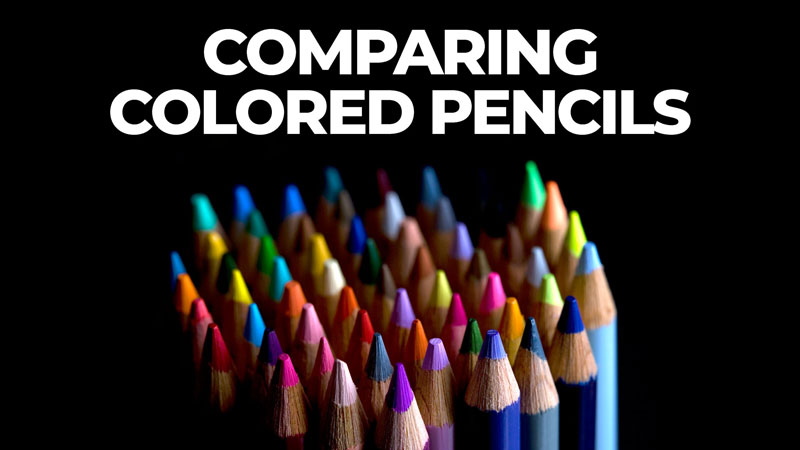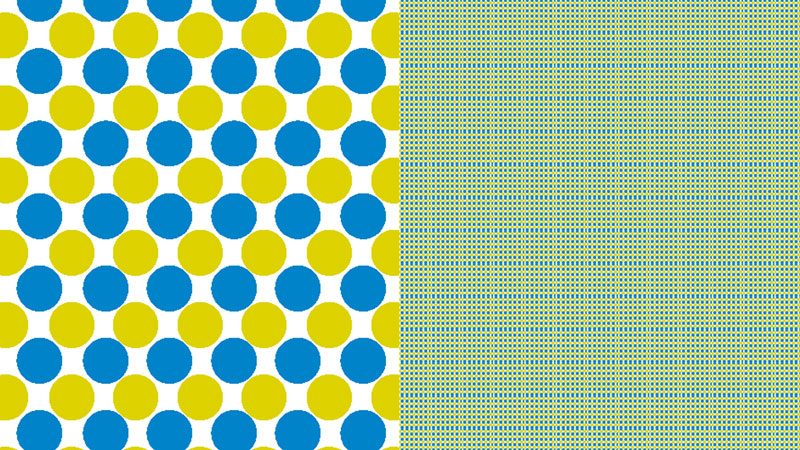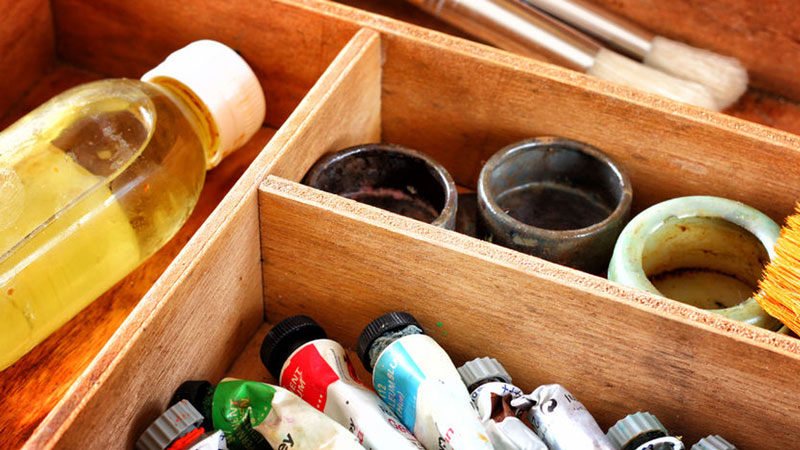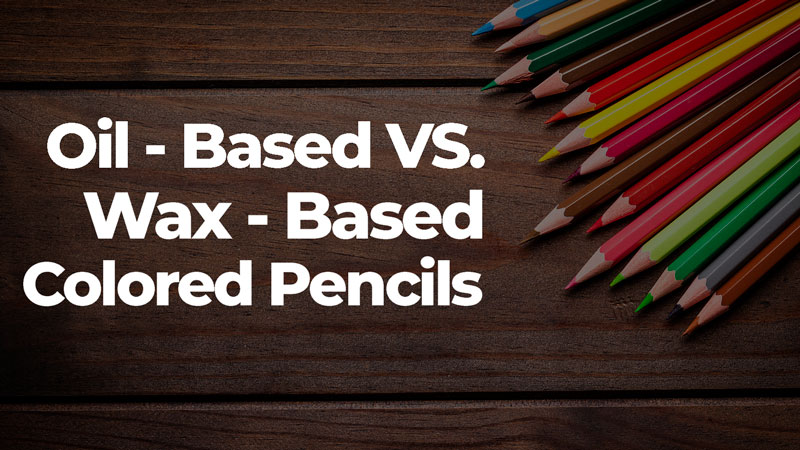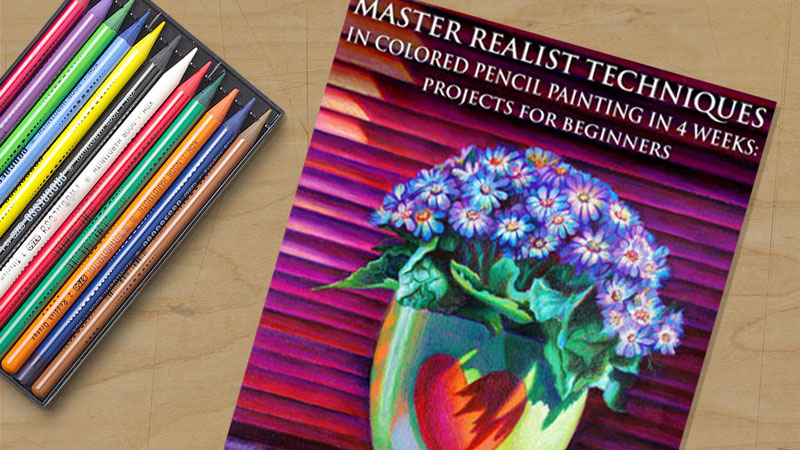
Veronica is also an instructor with several published books under her belt. The one I’m most excited about is “Master Realist Techniques in Colored Pencil Painting in 4 Weeks: Projects for Beginners”. I’ve had a chance to take a look at this book and I have to say that it is the most thorough and complete instruction book on colored pencils that I’ve ever had in my hands. Everything is covered in this book of 146 full color pages.
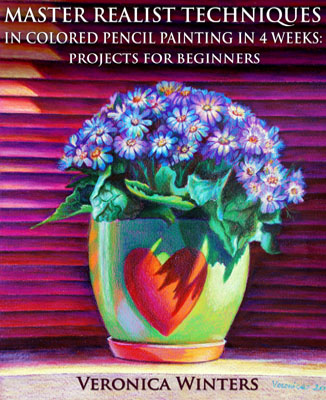
Veronica has graciously agreed to give away one copy of her book to one lucky reader of the blog (Thanks, Veronica). To win the book, simply leave your best drawing tip in the comments at the end of the post. On June 7, I’ll pick one of the tips as the winner and mail you Veronica’s book.
I was honored to ask Veronica a few questions about her work and her journey into the art world. What follows are her responses to my questions.
1. When did you first start drawing?
“I started drawing when I was a kid, probably around the age of 7. I looked at my mom’s art who was a good amateur artist herself. I liked copying her drawings at first, then illustrations in art books, then drawing my own imaginary scenes. It’s funny now to remember how I drew popular cartoon characters for almost everyone in my high school class. Those characters were from American cartoons, ‘novelty’, foreign depiction of the world that had just entered our TV screens…
My parents were always artistically inclined. We often went to see art shows in Moscow and we also saw many ballet and other performances. It was a cumulative experience for me. Russia has a very strict, rigorous training in the arts and the performers were best of the best in Moscow. Now I understand how hard it must have been for artists to remain on top of things, especially the ballet dancers… I wanted to become an artist after high school but I graduated in 1993 when Russia, my native country was on the brink of turmoil and long-lasting economic and political downfall. It would be very stupid of me to pursue my art degree knowing I wouldn’t be able to make it financially.”
2. What inspired you to start creating art?
“I think my art was always a lot more about communication than inspiration. I do get inspired by other artists and art but I create it because of inner need to do so, not because I’m waiting for Muse to come down from above and visit me. Also, art is so much work, rather than inspiration…Art is personal language. When it’s difficult to say something verbally, it’s easy to paint it. I always kept my thoughts and emotions bottled up inside and art was a natural way for me to communicate. I remember looking at color plates of masterpieces when I was a kid and I liked to visit museums in Moscow.
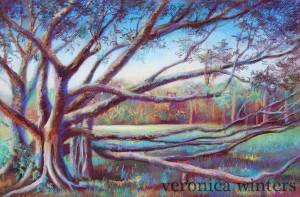
As of now, inspiration comes from many different sources, like environment (landscape), travel, books, literature, art magazines, architecture, other artists’ work, and my imagination. My personal (surreal) art is about my struggles, emotions, psychology of the human being. It’s something that doesn’t sell as opposed to flowers or landscapes but there are people out there who understand this kind of art and feel a strong connection to a piece(s).”
3. Did you have any teachers that were inspirational to you?
“I was always interested in understanding how to paint what I saw (realism so to speak). Jack Titus was one of my professors at the Oklahoma State U. He created life-size drawings of people in colored pencil and graphite and he was one of the teachers who really encouraged me to apply to the Master’s program. He was one of few artists/teachers who believed in me. Not everyone saw me do it back then. Before that I had got a good start at Tulsa Community College, from which I retained many good memories . After graduation with my MFA in painting from Penn State I began going to New York once in a while taking classes from artists I really admired. I took classes at the Art Students League of New York and the Grand central Academy of Art with Michael Grimaldi and Dan Thompson, Jon deMartin and others. These artists were trained in classical tradition and their art is inspirational to me. It was there where I began to put all the pieces together forming my understanding of classical drawing techniques. I had had lots of information but no “glue” or consistency to hold it all together. By studying with these artists I saw the approach to classical painting and drawing. There are no short-cuts here. It’s lots of work and effort on daily basis for many years to come…”
4. What artist(s) inspired you?
“I have a long list of artists that gets longer and longer. I love the brushwork of Sargent and Rembrandt; The beauty of female figure by Bouguereau, Bellini, Titian and contemporary Russian artist- Serge Marshennikov. I really like contemporary painters-Rob Gonsalves (cp), Brad Kunkle, Anthony Ryder, Collin Bogle, etc.”
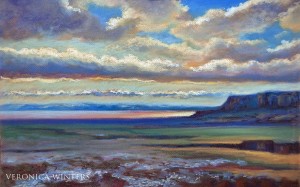
5. What subject matter and media are you most interested in?
“Although I was trained to draw in any dry media (pastels, charcoal, pencil, ink, colored pencils and watercolor,oil and acrylic) I prefer to focus on colored pencils and oils. I like the precision, detail, control and color layering with colored pencils. My favorite brand is Prismacolor Premier although there are a few more good ones available on the market. I love oils for spontaneity and experimentation. It’s also more durable and can be painted huge. There is also so much history to oil painting. Although I know I couldn’t possibly compete with the Masters, I feel excited to be in their shadow.
My favorite subject is surreal depiction of reality. It’s when I’m able to achieve realistic feel of the scene that doesn’t exist but could possibly exist out there..”
6. What advice can you give to new artists?
“To be patient with yourself. Based on my teaching experience, students often want to become really good in a few lessons, which is impossible! I’ve spent 14 years learning and I often feel like I know almost nothing about painting. Also, painting from life is essential to the learning process. Students bring 3″ x 3″ pictures at times and want to paint from them. That’s not a good start…It’s about studying your subject, observing it from various points of view, learning to extrapolate information in front of our eyes to see it as artists do. Learn to slow down and spend time thinking about your subject, studying it, controlling the light and seeing shadows in your still life.”
7. What advice can you give to experienced artists? < tough one >
“It is a tough one. I’d say to be open to changes and innovation. I think many good artists just stop re-inventing themselves at some point and it becomes the same thing over and over again. I don’t think it’s bad as the style is found and established. Also, experienced artists could be very helpful to others in developing their craft, in my opinion. They could be advocates for the arts.”
8. Do you ever get frustrated with your art, and how do you work through it?
“Oh, yes. I do get frustrated with it quite often. Sometimes, I have to start all over again with a piece if it doesn’t come out the way I want it to be. But there are times when I just work through it and it turns out well, although it might look different from my original intend. It often happens in oil painting… The more planning I do drawing though, the better my chances are at succeeding either drawing or painting. Happy mistakes are rare. I must envision (study, plan, organize,) my finished piece before I even touch it with either pencils or paint. The more realistic you want it to be, the more studying and planning is involved.”
9. What made you start creating instructional materials?
“My students led me to it…Sometimes I even get requests to create an online class… I often caught myself explaining the same concepts to every single student over and over again and it led me to seeing and understanding what students needed/lacked in their art. Also, it was such a struggle for me personally to learn the craft (and I’m still learning every single day) that I know what students really want and expect to receive from me as their instructor and thus I began developing short demos first that became articles in Leisure Painter and my books. Although my books are not perfect they do lay out several very basic concepts every student must know about drawing. There is a lot of “stuff” to read, comprehend, and practice that students want to skip, proceeding to demos. It diminishes their results. We often have no patience with ourselves and want to cut corners. So, I do lay out several important concepts, such as light direction, the importance of taking good pictures, understanding of values, positive/negative space, etc,I also give practical tips on how to pay attention to edges or draw ellipses correctly or mix colors in unexpected ways.”
“Master realist techniques in colored pencil painting in 4 weeks” was my first big attempt to collect and organize information that I wanted to communicate with my students about colored pencil drawing. Besides having basic concepts that I’ve mentioned above, it features my drawings and has many demos with different skill levels. In those demos I show how I approach drawing fabric, fruit, glass, landscape, crystal and so on. I think there are many excellent colored pencil artists out there who strive for amazing photo realism. I’m different in this regard as I communicate through color and interpretation, so my work (and demos) reflect this liberty taken at interpretation of things. I’m interested teaching realism that is based on understanding of classical concepts, yet allows for personal intuition and freedom (for instance, you can come up with unique textures through your personal “handwriting”/drawing). This is reflected in my drawing and teaching.”
Here are a few ways that you can connect with Veronica…
Facebook: facebook.com/veronicasart
YouTube: youtube.com/veronicasart
To visit Veronica’s website and purchase instructional materials: Visit Veronicasart.com
If so, join over 36,000 others that receive our newsletter with new drawing and painting lessons. Plus, check out three of our course videos and ebooks for free.

